Adorian Fire Temple: Zoroastrian Temple in Tehran
In the heart of Tehran, behind a humble wooden door within a peaceful garden, you'll find the Adorian Fire Temple—a cherished place where Zoroastrians have worshiped for ages.
Even though it's close to a busy street, inside you'll find peace and quiet. The temple is beautiful, with lots of cool designs and a flame that's always lit. It's a place where history and today's calmness blend together. Let's explore its stories together.
History and Significance of Adorian Fire Temple
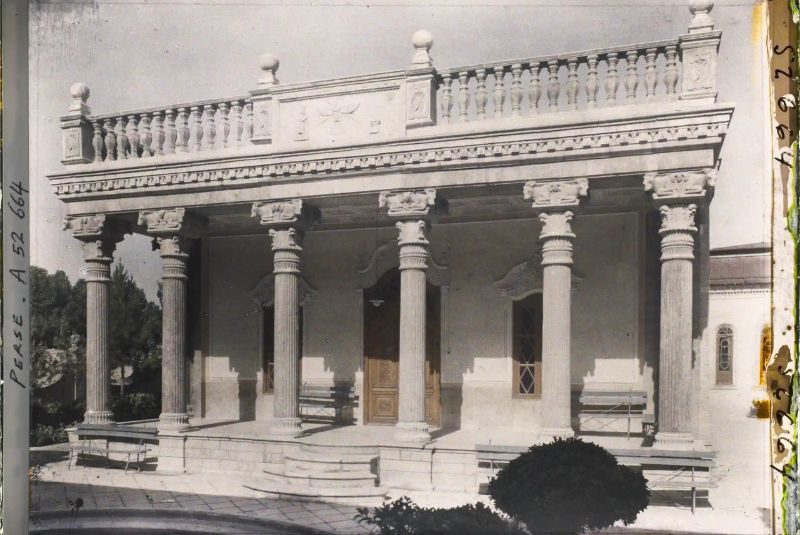
The Adorian Fire Temple in Tehran is steeped in history and owes much of its existence to Keikhosrow Shahrokh, also known as "Lord Khosrow." Born in 1875, Shahrokh was a key figure in the early 20th century, contributing significantly to various facets of Iranian society. His influence extended beyond the construction of the Adorian Fire Temple; he was instrumental in founding Iran's nationwide telephone network and the Majlis Library, discovering the burial place of Ferdowsi, and supporting the construction of schools in Tehran and Kerman.
Shahrokh's dedication to the Zoroastrian community was evident through his role as the head of the Tehran Zoroastrian Association. In 1914, he laid the foundation stone for the Adorian Fire Temple with substantial financial support from Zoroastrians in Iran and India, particularly through Bahramji Bikaji, the head of the Indian Parsi Association. The construction of the temple took three years, and it officially opened on November 24, 1917.
The sacred fire of the Adorian Temple was brought from Yazd to Tehran in 1917 by priests Ardeshir Rostami, Rashid Sheid, and Bahram Soroush through a special 25-day ritual. This fire was placed on a stone base in a copper vessel on November 30, during the Azargan festival, marked by singing and prayers.
In 2008, the management of the Adorian Fire Temple was handed over to the Mobeds Association, and it continues to host various ceremonies, including Vaj Yasht, memorials for the departed, Ordibehesht prayers, and marriage ceremonies. The temple's facade underwent a significant transformation from brick to marble in 1966, funded by Shirmard Farahmand and Fereydoun Farahmand. This marble facade, dedicated to Shirmard Farahmand, remains a notable feature of the temple today.
Adorian Temple Cultural and Religious Significance
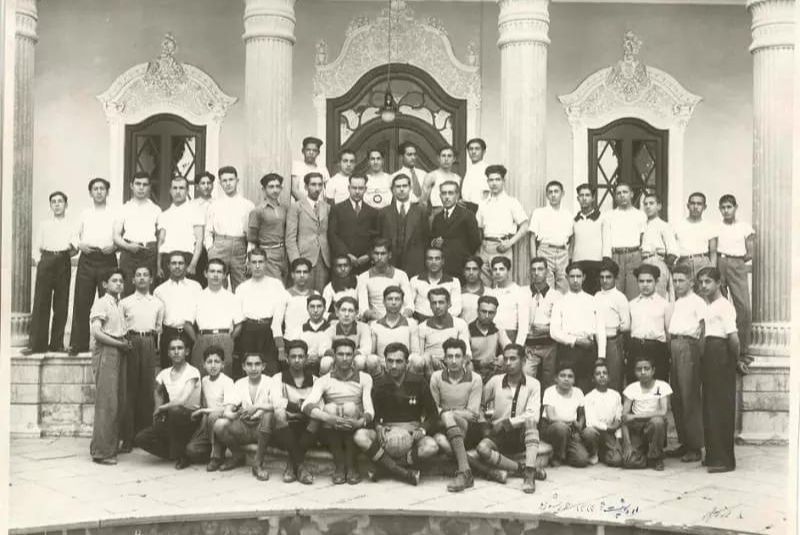
The Adorian Fire Temple is known by several names, including Zoroastrian Mosque, Zoroastrian Temple, Tehran Fire Temple, Zoroastrian Prayer House, Adorian Temple, and Adoran. In some maps, it is listed as the Zoroastrian Mosque or Fire Temple, but among followers of Zoroastrianism, the term "Mabed" is more common.
The name "Adorian" is derived from the words "Adaran" or "Azaran," meaning "place of fire." This term comes from the combination of "Adar" (fire) and the suffix "An," together meaning "a place where there is a lot of fire" or "a place where fire is kept." In Zoroastrian culture, the fire maintained in this space is called "Spandineh," meaning pure and holy.
Zoroastrianism recognizes three types of sacred fires: "Dadgah," "Adaran" (or Adrian), and "Bahram" (or Vahram). Although the temple is named Adorian, the fire it houses is of the "Bahram" type, one of the highest and most revered in Zoroastrian rituals.
What to Expect When Visiting Adorian Temple?
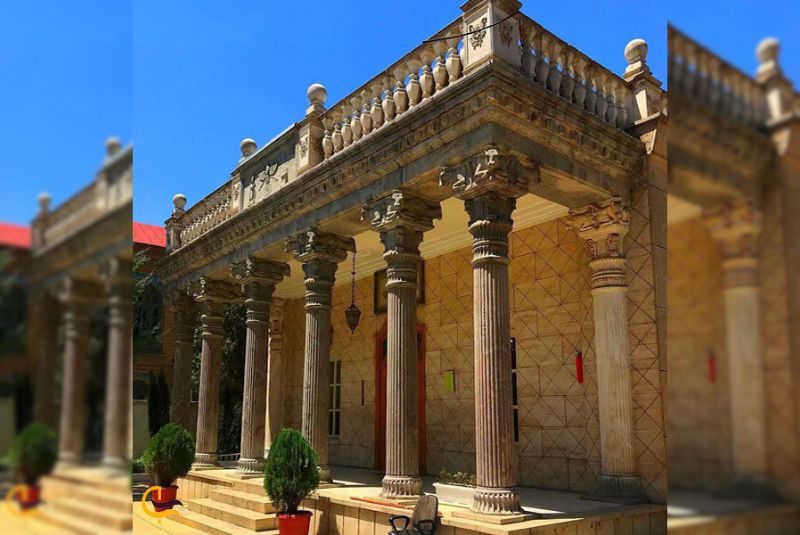
When you visit the Adorian Fire Temple, you're stepping into a site rich with over 100 years of history, spread across a 1,300 square meter plot encircled by brick walls. The entrance is marked by a traditional wooden door and a marble stone featuring two angels, with the inscription "Khashnutraha Ahura Mazda," meaning "for the pleasure of Ahura Mazda," along with the construction year. This phrase is often found at the beginning of many Zoroastrian prayers.
The temple’s main building, located in the center of a garden surrounded by pine trees, stands out with its white stone facade. The architecture is adorned with congresses on the walls, similar to many historic buildings in Iran. The building has a gable roof, though cleverly designed so that the roof is not visible from the front.
Upon entering the garden, you'll see an oval basin decorated with vases right in front of the main door. The basin measures four by eight meters and adds to the serene atmosphere. The architectural elements and their arrangement remind visitors of the Yazd Fire Temple, enhancing its spiritual ambiance.
At the entrance of the main building, six stone pillars with spoon designs support an eastern porch, creating a grand entrance. Additional columns flank the porch, and the capitals of these pillars feature carvings of cow heads, symbolizing creation and the four corners of the world in Zoroastrianism. Between the horns, carvings of leaves and grapes represent happiness.
The courtyard of the temple complex features 16 stone balls, symbolizing the 16 sacred fires in Zoroastrianism. A staircase next to the main door leads to the second floor, where the caretaker resides.
Above the main building’s entrance, a stone inscription features the sun, fire, and a unique depiction of the Faravahar, holding a semi-circular bow. Unlike typical Faravahar carvings that show a ring, this one has the claws of a hunting bird symbolizing the fight between good and evil. Beside the Faravahar, a spiritual figure believed to represent King Vishtaspa, who protected Zoroaster, holds a bow. Above this scene, inscribed between two angels, is a passage from the Avesta, where Zoroastrians pray to Ahura Mazda, seeking protection and the defeat of those who persecute the holy fire.
Adorian Fire Temple Complex
The Adorian Fire Temple complex is divided into several important sections, each with its unique purpose and design:
Prayer Hall
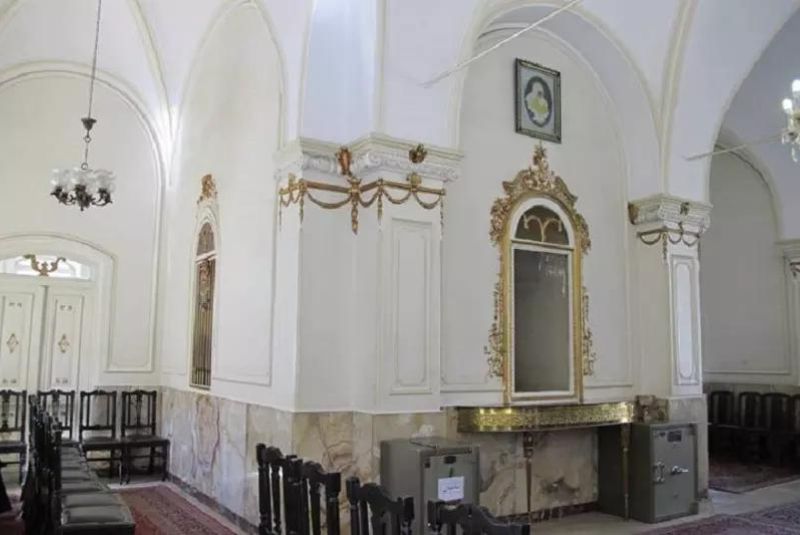
The prayer hall, also known as the worship hall, is adorned with colorful carpets and gold and copper plasterwork. In the center of the west hall is a space for maintaining the fire, accessible from three sides (north, south, and east) and blocked by a wall to the west. The hall features arched windows and an old stone inscription with a plaster frame. Mobeds (Zoroastrian priests) pray on the left side, while chairs are arranged around the hall for visitors.
Fire Place
At the heart of the Adorian complex lies a square room dedicated to housing the sacred fire. Thick glass panels on each side allow worshippers to view the fire, which is kept elevated on a 30 cm high stone column in a beautiful copper vessel, known by various names such as Afaringan and Adoran. This vessel contains half-burnt logs and ashes, and the fire is tended by a fireman, known as "Atakhsh Bandag" or "Adoran Bandag."
Yasht Room
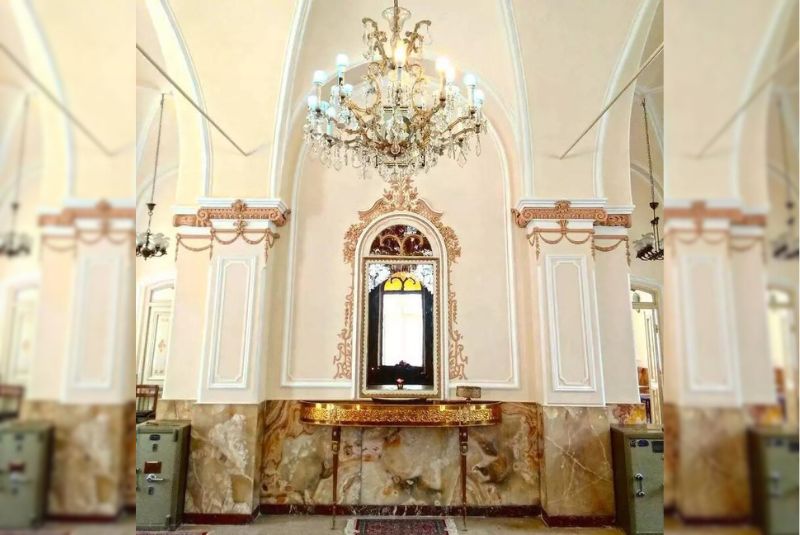
Located in the westernmost part of the complex, the Yasht Room is used for mourning ceremonies. It includes two spaces: one larger area with a capacity of 100 people and a central reception table, and a smaller space for 30 people with refrigerators. During ceremonies, food is placed on the tables, and attendees listen to Avesta recitations by a Mobed. Guests are then treated to traditional nuts called "Lork" and fruits.
Kitchen
The kitchen, situated behind the main building, features old ovens called Tanoor, cookers, and several modern ovens. It is used to prepare special foods for mourning ceremonies, such as Garlic and Sadab, Sirog bread, rice halva, and sugar halva. There is also a separate area dedicated to baking bread for Zoroastrian rituals.
Additional Buildings
The complex includes four additional buildings: two from the Qajar period in the east with gabled roofs, and two from the second Pahlavi period in the west with flat roofs. One of the western buildings is designated for bread baking.
Reception Complex
The Adorian reception complex is a three-story building with various halls for different events. The ground floor houses "Bahman" and "Khosravi" halls for weddings and "Iraj" hall for religious ceremonies. The first floor contains the central office and dining hall, while the second floor has a board meeting hall for the Zoroastrian Association, connected to the Iraj hall by a staircase. The public meeting office of Mobed Mobedan "Rostam Shahzadi" is also located in this complex.
Why Visit Adorian Fire Temple?
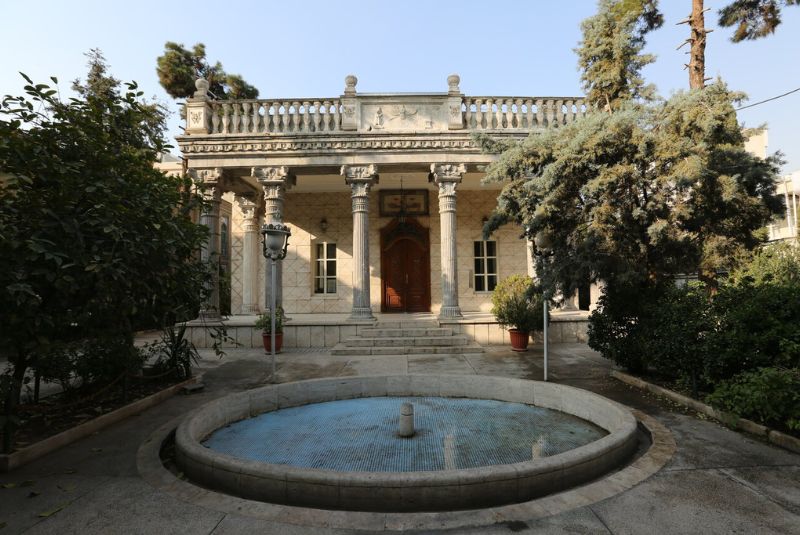
The Adorian Fire Temple is not just a place of worship but a symbol of Zoroastrian heritage and culture. Here are compelling reasons to visit this unique site:
- Historical Significance: Established over a century ago, the Adorian Fire Temple represents the rich history of Zoroastrianism in Iran. It’s a testament to the enduring legacy of this ancient religion.
- Architectural Beauty: The temple’s architecture is a blend of traditional Zoroastrian and Persian styles. From its beautiful marble facade to the intricate carvings and symbolic pillars, the temple is a marvel to behold.
- Cultural Insight: Visiting the Adorian Fire Temple offers a unique glimpse into Zoroastrian rituals and traditions. The prayer hall, fire place, and Yasht room each provide insight into the religious practices and communal ceremonies of Zoroastrians.
- Peaceful Atmosphere: Set within a serene garden with tall pine trees, the temple offers a peaceful retreat from the bustling city streets. It’s an ideal spot for reflection and contemplation.
- Guided Experience: Mobeds are available to guide visitors, providing detailed explanations of the temple’s history, architecture, and religious significance. This personalized experience makes the visit even more enriching.
- Accessibility: Located in central Tehran, the temple is easily accessible by public transportation and offers a convenient destination for both locals and tourists.
Tips for Adorian Temple Visitors
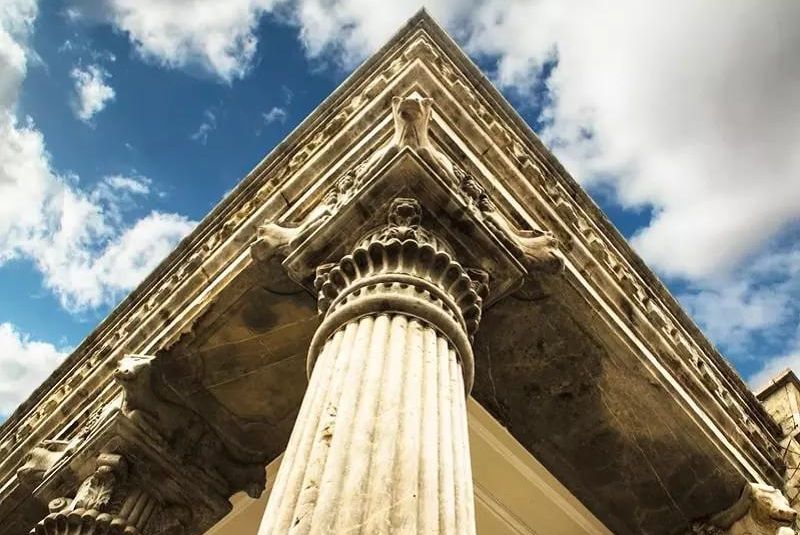
Before planning your visit to the Adorian Fire Temple, consider the following tips to ensure a smooth and respectful experience:
- Visiting Hours: Open from Saturday to Wednesday, 8:30 AM to 1:00 PM, and on Thursdays from 8:30 AM to 12:00 PM.
- Appointment: Coordinate by phone before visiting. The office door is on the left side of the main building.
- Photography: Permission is required for taking photos. Do not take pictures without coordinating with the officials.
- Religious Ceremonies and Holidays: Visiting during religious ceremonies and official holidays is not permitted without prior coordination.
- Guidance: Mobeds (Zoroastrian priests) are available to guide tourists.
- Cleanliness: Wash hands and face in the courtyard washroom before entering.
- Footwear: Remove shoes before entering.
- Dress Code for Men: Wear white hats (Araghchin) available from iron cupboards in the temple.
- Dress Code for Women: Wear appropriate clothing and a white scarf from the drawers of iron wardrobes. Women cannot enter during their period.
- Making Vows: Priests provide small glasses containing oil, water, and a wick for lighting after making a vow.
Adorian Fire Temple Location and Access Routes
The Adorian Fire Temple is located at No. 4, Mirza Kochakh Khan St., Jomhouri St., Tehran, near Firoz Bahram High School, a notable Zoroastrian building.
Access by Bus
- Use BRT buses running from Jomhouri Square.
- Get off at the intersection of Jomhouri and Ferdowsi streets (or Jomhouri and Hafez streets).
- Walk a few minutes to reach the temple.
Access by Metro
- Use line 1 of the Tehran metro (Kahrizak to Tajrish).
- Get off at Saadi or Hassan Abad stations.
- Walk less than 15 minutes (stations are less than 1.5 km from the temple).
Access by Private Car
- The temple is within the traffic plan zone; consider traffic restrictions.
- Contact Number: 02166706865
The Adorian Fire Temple is easily accessible and located in a historical area known as "Gozar Adyan" or the Crossroads of Religions, where mosques, churches, synagogues, and fire temples coexist.
Sights Around Adorian Fire Temple
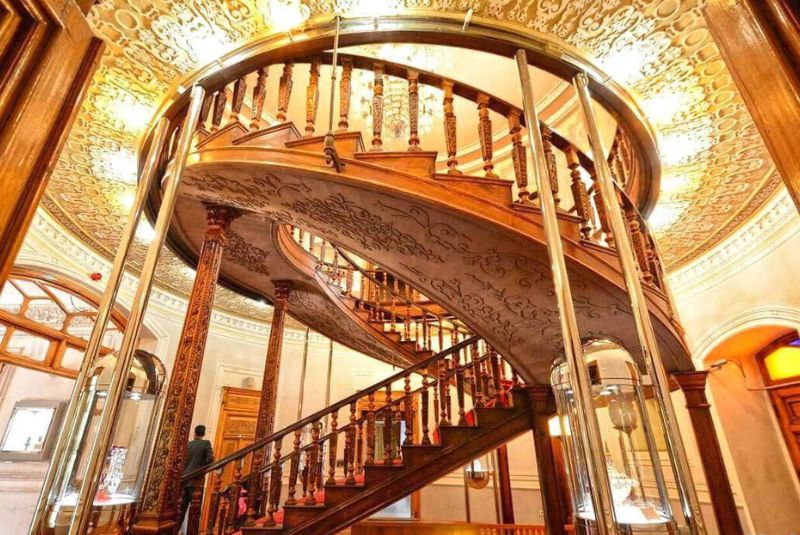
Exploring the area around the Adorian Fire Temple offers visitors a chance to uncover a rich array of history and culture.
- Abgineh Museum: The Abgineh Museum, Iran's first glass and pottery museum, was built in 1912 by Qawam al-Saltaneh, a minister of Ahmad Shah Qajar. The mansion, designed by architect Mohammed Ali Memar Bashi, was Qawam al-Saltaneh's residence for 30 years. Over time, it served as the Russian and Egyptian embassies, the Afghan embassy, and a commercial office before being acquired by Farah Pahlavi in 1979 and handed over to the Ministry of Culture and Arts.
- Hayim Synagogue: As the first Jewish place of worship outside the Odlajan neighborhood, Hayim Synagogue holds significant historical importance. Built between 1906 and 1911 by well-known Jewish merchants of Tehran, its construction was overseen by Master Azizullah Bayan, a famous Jewish engineer of the time. Today, it is the only national museum for Jews in Iran and is a listed national monument. Visiting is subject to restrictions, especially during religious ceremonies.
- Church of the Holy Mary of Tehran: This Armenian church, designed by Russian architect Nikolai Markov, features a cruciform plan and three entrance doors, with the name of the builder and the year of construction engraved above one of them. Belonging to the Pahlavi period, the church is known for its illuminated interior, thanks to three windows around the altar. The dome-shaped bell tower on the west side adds to its architectural charm. The Church of the Holy Mary hosts the New Year ceremony annually.
- Manoukian Museum (Armenian Anthropology Museum): Located near the Church of the Holy Mary, the Manoukian Museum was established in 2008 within one of the church buildings. Named after Archbishop Ardak Manoukian, who served as the archbishop of Tehran for about 40 years, this museum is a hub for Armenian culture and history. It was inaugurated by Aram I, the leader of all Armenians in the Cilicia region. The museum showcases Armenian clothing, cultural artifacts, and related tools.
Finally!
The Adorian Fire Temple stands as a testament to the rich cultural and spiritual heritage of Zoroastrianism in Iran. Its stunning architecture, serene gardens, and profound history make it a must-visit destination for anyone interested in exploring the roots of one of the world’s oldest religions. Whether you are drawn by its historical significance, its peaceful atmosphere, or the unique insights into Zoroastrian rituals, a visit to this temple offers an unforgettable experience. Plan your visit, appreciate the rich traditions, and delve into the calm beauty of the Adorian Fire Temple. It’s more than just a place of worship; it’s a gateway to understanding a pivotal part of Iran’s cultural heritage.
Share your story!
Comment below and let us know about your Experience.
Your story inspires others!


Comment
Leave a Comment